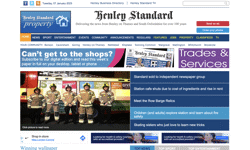Print will continue to be a unique advantage in the advertising world for many years to come, despite rhetoric to the contrary about all things digital.
Though the rapid growth of digital revenues and usage is significant, print continues to provide the bulk of revenues to newspaper companies even in light of the "second wave" of digital developments on mobiles and tablets.
And even where digital advertising revenues are approaching and surpassing those of print, the traditional print newspaper continues to produce large revenues and profits, from both sales and advertising.
But perhaps even more importantly, only newspaper and magazine companies can offer print as part of a multimedia advertising package a unique advantage offering advertising effectiveness, audience loyalty and an attractive environment for advertisers.
"Most of the revenues are still connected to print products you can still make a lot of money from print," said Anders Berglund, Sales Director of Sweden's biggest daily newspaper, Aftonbladet. "It is important to have a focus on interesting new launches and new products, but also continue to develop the established products."
The Schibsted-owned Aftonbladet is perhaps one of the most successful newspapers world-wide in terms of digital advertising it now produces a nearly 50-50 split in advertising revenues from print and digital. But the 160 million Euros it generates from newspaper sales annually dwarfs the 95 million that comes from advertising. Those sales "will be the main revenue stream for us for 2, 3, 4, 5 years we'll see."
Adrian Hillman, Executive Director of Allied Newspapers, the publisher of the Malta Times, has good reason to develop digital properties half his online audience comes from Maltese living overseas. But he too said that developing a portfolio of print products continues to be lucrative.
"It is important to have our news pumped to every available electronic device," he said. "Advertisers will latch on to this. However, the demand for print is still growing because we have a spectrum of products to offer our client. We're generating more belief in print, and more belief in our organisation."
"What we believe is that you build on the strengths you have," he said.
In many developed markets, digital advertising is reaching or surpassing the advertising generated by print newspapers, said Eamonn Byrne, Managing Director of The Byrne Partnership in the United Kingdom. But the bulk of those revenues are going to Google and other search engines and will never come to media companies.
"In the context of a newspaper company, as an advertising salesperson, you have to look where the money is," he said.
"Within your company, you'll be under great pressure for digital, and the advertisers will all be calling for digital. And the agencies will all say, 'we're really cool, we do multimedia campaigns all the time, " he said.
"It's a problem, and you have to get yourself out of this, and the way out is integrated media campaigns. If you put together print and television and radio and internet and mobile, that's cool again. It's one way of selling print, and making it fashionable again."
The 21st World Newspaper Advertising Conference, organised by the World Association of Newspapers and News Publishers (WAN-IFRA), drew more than 200 publishers, advertising directors and other senior newspaper executives to Malta. Summaries of all presentations can be found online.










